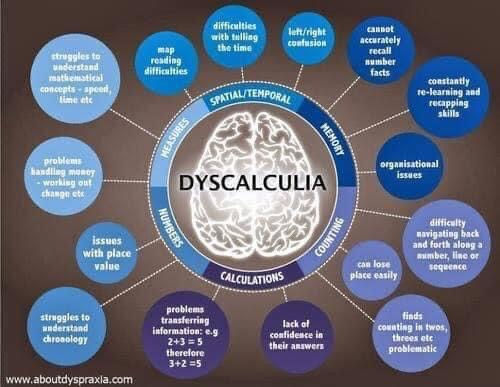Let’s Talk About: Dyslexia
- Dr. Mary Jo Ray-Jewett
- Jun 6, 2024
- 4 min read

October is Dyslexia Awareness Month. So, let’s talk about dyslexia, its impact on education, and possible school accommodations.
One in five people has characteristics of dyslexia. This is as many as 15-20% of the population exhibiting some of the symptoms of dyslexia. Dyslexia is often genetic, meaning it runs in families. Although a lifelong learning difference affects people from all backgrounds worldwide, the symptoms can range from mild to severe. It is crucial to understand dyslexia is a neurological problem.
For eligibility and special education services, Dyslexia falls under the “Specific Learning Disability” (SLD) category. However, four specific and different diagnoses fall under the SLD category that frequently get called “dyslexia.” Dyslexia, dyscalculia, dysgraphia, and dyspraxia are very different neurologically based learning disabilities. Knowing the specific diagnosis is imperative to appropriate teaching strategies and accommodations. Let’s talk about each one.
Dyslexia is a language-based learning disability characterized by difficulties with reading, spelling, and word recognition. Common symptoms include difficulty:
Learning letters and their sounds results in a weakness in distinguishing the sounds of language (phonological awareness). These difficulties may lead to problems with vocabulary development, reading comprehension, and written expression.
Identifying syllables and sounds in words, especially vowels
Recognizing words
Reading accurately and fluently
Reading quickly enough to comprehend
Organizing written and spoken language
Spelling
Persisting with and comprehending longer reading assignments
Learning a foreign language

Dyscalculia is learning difficulties with numbers and math. Common symptoms include trouble:
Recognizing quantities without counting
Understanding number-related concepts or using symbols or functions needed
Correctly doing math operations
Memorizing number facts
Keeping score in games, often losing track of whose turn it is
Remembering number-related dates and facts
Completing mental math and may count on fingers
Telling time on an analog clock
Sorting out directions (right from left)
A person with dyscalculia often needs a calculator, misplaces objects frequently, misjudges how long it will take to drive somewhere, gets lost easily, and is frequently late.

Dysgraphia is a learning disability specific to writing, a disorder in written expression, including spelling, handwriting, and composition. Writing is a complex process that involves a variety of skills and brain functions, including fine motor skills, spatial perception, working memory (the ability to hold and manipulate information in your mind), orthographic coding (the ability to form, store, and recall letters, number, and symbols), language processing, conceptualization, and organization. Symptoms include issues with:
Letter formation and/or legibility
Letter size and spacing
Spelling
Fine motor coordination
Rate or speed of writing
Grammar
Composition
Writing in a straight line
Holding and controlling a writing tool
Writing letters in reverse
Recalling how letters are formed
Knowing when to use lower or upper case letters
Forming written sentences with correct grammar and punctuation
Omitting words from sentences
Ordering words in sentences
Using verbs and pronouns incorrectly

Dyspraxia, sometimes called Developmental Coordination Disorder, is a disorder of movement and coordination in which messages sent from the brain to the muscles are interrupted. There are three different types of dyspraxia. Motor dyspraxia (problems with skills like writing, dressing, or skipping), verbal dyspraxia (problems with speech), and oral dyspraxia (problems with movements of the mouth and tongue). I am only addressing motor dyspraxia in this post. The difficulties with motor coordination can lead to difficulties with handwriting. Common symptoms of dyspraxia include:
Awkwardness or clumsy
Difficulty with writing, buttoning, tying shoelaces, running or jumping
Difficulty learning new skills
Bumping into other people or objects
Becoming tired easily
Avoiding complex tasks (such as handwriting)
Difficulty changing clothes
Making a mess when eating

Now that you understand the specifics of the disorders, let’s talk about their effect. Children with unrecognized dyslexia/dyscalculia/dysgraphia/dyspraxia might feel discouraged and worry about falling behind. Their confidence in their competence as learners is affected. These children do fall behind, and because early reading, writing, and math skills build to be complex skills, they just keep falling.
Understanding these 4 learning differences are neurological (brain-based) in origin is imperative. Standard reading, writing, and math teaching strategies will not work. The dyslexic/dyscalculic/dysgraphic/dyspraxic brain functions differently and requires specific strategies to target the neurological differences. Schools should be able to offer a variety of instructional approaches, not simply one approach used with all students. IDEA to the rescue!
IDEA mandates special education and related services be guided by peer-reviewed research. This means the instructional programs and services for those students with dyslexia, dyscalculia, dysgraphia, and dyspraxia should be supported by solid evidence of effectiveness that has been determined through scientifically based research. Ask your child’s school whether they are using scientifically-based research to support the instructional program or methodology proposed for your child. Ask specifically for the research, including evidence of its effectiveness. Remember, the definition of Special Education is “specifically designed instruction”- evidenced-based instruction designed specifically for your child’s strengths, challenges, and learning style.
Now, let’s talk about accommodations. To make it simple, I put them in a chart.
Accommodations for: | |||
Dyslexia | Dyscalculia | Dysgraphia | Dyspraxia |
|
|
|
|
People with dyslexia often have strengths in creativity, problem-solving, designing, and building things. They are frequently imaginative and skilled in music, theatre, and art. They are often intuitive, persistent, empathetic, compassionate, athletic, outside-the-box problem solvers, big-picture thinkers, and inventive with solid entrepreneurial and 3-D skills. These individuals have strong reasoning, critical thinking, general knowledge, problem-solving, and oral skills. No two people with dyslexia are the same. Their strengths should be nurtured, and their struggles supported.
Please reach out if you are struggling to get your child diagnosed, evaluated, appropriate accommodations, or specifically designed instruction. The International Dyslexia Association is also a wealth of information. You can find them here: https://dyslexiaida.org




Comments